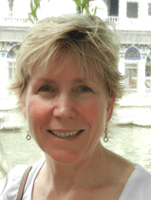
Please describe the research questions of your lab.
In my lab, we use multi-omic approaches to identify biomarkers and pathways of disease in COPD. We utilize well-characterized patient cohort studies to identify biomarkers of COPD, understand COPD role in carcinogenesis and the role of HIV in developing COPD. Multi-omic approaches include transcriptomics, translators, proteomics and metabolomics. For proteomics and metabolomics, we utilize state-of-the-art mass spectrometry-based studies. We collaborate with experts in computational biology and statistics to identify key biomarkers and pathways of disease in these complex datasets. In addition, we have an interest in metagenomics and have characterized the lung and upper respiratory tract microbiome in COPD to understand its impact on pathogenesis. To contribute to the larger scientific community, these datasets are publicly available through open-access data repositories.
What genetics/genomics techniques do you utilize in your lab?
We utilize a multi-omic approach. This includes RNA-Seq, proteomics, metabolomics and 16S rRNA sequencing of the microbiome.
Describe a key technique/assay/instrument utilized in your lab, and what novel insights does it bring to your research question?
We use mass-spectrometry based analysis for both proteomics and metabolomics. For proteomics, we have used both labeled and unlabeled techniques. In regards to metabolomics, we have used both qualitative profiling and quantitative methods using standards for SRM and MRM. We have performed RNA sequencing on whole lung tissue including total mRNA and polyribosomal RNA.
At what point in your life did you decide you wanted to be a scientist/physician?
I have had a life-long interest in science. I was a biochemistry major in undergraduate school and pursued lab bench research that included my honors thesis. I continued basic laboratory throughout medical school and into my subspecialty training. Early research included cell biology and molecular techniques that subsequently brought me back to my roots in biochemistry with mass spectrometry and protein chemistry.
In your opinion, what is one of the most important discoveries in the field of respiratory illness/disease/function that was dependent on genomics or similar techniques?
Although it is not my area of study, as a pulmonologist I believe there is no bigger success story than the discovery of the gene and its various mutations for cystic fibrosis (CF). With the identification of the gene, there have been decades of new insights into the pathogenesis of this disease. These discoveries have now resulted in a new therapy that will likely alter the course of this disease and offer improved health for most individuals with CF. Interestingly, CF is a relatively straight forward genetic defect that was discovered over 30 years ago and it wasn’t until 2019 that the first drug directed at this defect has become available. Therefore, it is a lesson for patience for those of us that study such genetically complex diseases such as asthma and COPD.
Briefly describe your favorite publication involving genomics/omics that you were involved with.
Sandri, BJ, L Masvidal, C Murie, M Bartish, S Avdulov, L Higgins, T Markowski, M Peterson, J Bergh, P Yang, C Rolny, AH Limper, TJ Griffin, PB Bitterman, CH Wendt*, O Larsson*. Distinct cancer-promoting stromal gene expression depending on lung function. *equal contribution. Am J Respir Crit Care Med. 2019 Aug 1;200(3):348-358.PMID: 30742544
Using a multi-omic approach we discovered that the COPD lung matrix expresses unique oncogenic signals. Interestingly, these oncogenic signals vary depending on the severity of COPD. In mild COPD, we found a signal consistent with mTOR signaling along with the senescent secretome. In moderately, severe COPD we found signaling consistent with pathological extra-cellular matrix and the secretome associated with ETS2. These signals were present in a subset of resident fibroblasts. This observation offers a new paradigm that the lung matrix in COPD is not static and COPD severity should be taken into account regarding future research, both basic and clinical.
What is your favorite aspect of ATS?
Every year since fellowship I have eagerly awaited the ATS meeting, not just for the scientific sessions but to connect with friends and colleagues from around the country and world. At these meetings and through these connections, I have received invaluable advice regarding my research and career over the years. The scientific sessions, whether it is poster sessions, poster discussion sessions or symposia, both reinvigorate and inspire me in my research. The support of ATS for working groups and new sections, such as SGG, has been so instrumental in advancing my research and those of my colleagues. Although it is fulfilling to be with colleagues of similar interests, I have found my time spent on Assembly committees to be of incredible value as it has introduced me to individuals outside of my usual scientific field. These new relationships have helped broaden my understanding of pulmonary disease and research opportunities and approaches.
How could your research assist scientists and clinicians in other assemblies at ATS?
Although the study of proteins and metabolites are not new, the new high throughput approaches have moved proteomics and metabolomics to a different arena comparable to other genetic approaches. However, there is no universal approach to identify all proteins and metabolites within a sample. In addition, these large datasets require expertise in advanced statistical and bioinformatics approaches. Helping researchers understand the potential of proteomic and metabolomic approaches is important to advance medical discoveries. In addition, I would work to bring together computational and lab-based researchers to appreciate the full scope of what proteomics and metabolomics has to offer.
Would you be open to collaborations with GG and/or non-GG scientists and clinicians? Do you have any potential lab openings currently or in the near future?
I am always open to potential collaborations and postdoctoral positions are often available in my laboratory.